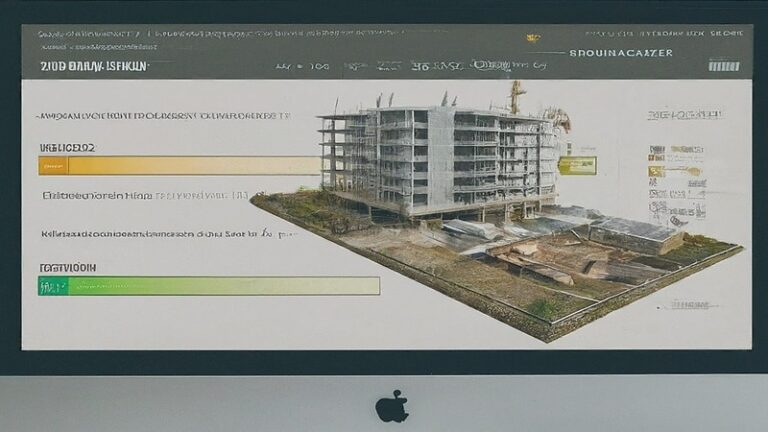The Importance of Data Integrity in Project Management:
In the intricate dance of project management, where timelines, budgets, and expectations intersect, data integrity stands as the cornerstone of success. Yet, despite its paramount importance, the journey from conception to completion often witnesses a perilous unraveling of data quality, particularly during the critical phase of project handover. This article delves into the repercussions of such data mishaps and advocates for a pivotal solution: integration. By seamlessly melding systems and processes, integration emerges as the linchpin in safeguarding the integrity of project data, ensuring a seamless handover and bolstering project success.
Challenges of Poor Data Quality During Project Handover:
Project handover, the pivotal moment when the baton passes from one phase to the next, encapsulates the culmination of collective efforts, resources, and information. It signifies not just a transfer of physical assets but also a relay of vital data. However, this exchange is often marred by the specter of data discrepancies, inconsistencies, and inefficiencies, leading to a litany of challenges. From data inconsistency and duplication to communication breakdowns and delayed deliveries, the repercussions of poor data quality reverberate across the project landscape, casting shadows on timelines, budgets, and client satisfaction. Construction estimation software can be used to effectively improve data accuracy, cost planning and employee communication during construction project handovers.
The Cost of Data Mishaps:
The cost of data mishaps extends far beyond mere inconvenience; it strikes at the heart of project viability. Financially, errors in data can translate into costly delays, rework, and contractual disputes, eroding profit margins and tarnishing reputations. Moreover, the intangible toll of client dissatisfaction and strained relationships can reverberate long after project completion, impacting future opportunities and market credibility.
Integration as a Solution:
Amidst this backdrop of uncertainty, integration emerges as a beacon of hope, offering a pathway to data salvation. At its core, integration entails the seamless amalgamation of disparate systems, processes, and datasets, fostering coherence and continuity across project lifecycles. By weaving together project management tools, BIM platforms, scheduling software, and financial systems, integration unlocks a treasure trove of benefits. It enhances data accuracy, ensuring that stakeholders operate from a single source of truth, while also fostering improved accessibility and communication, thus mitigating the risk of errors and misunderstandings.
Journey Towards Effective Integration:
The journey towards effective integration is multifaceted, encompassing both technological solutions and cultural shifts. Selecting the right software solutions tailored to project requirements lays the foundation for successful integration. Equally crucial is the cultivation of integrated workflows and collaborative mindsets among project teams, fostering a culture of transparency and accountability. Moreover, robust data governance policies, coupled with stringent quality control measures, serve as guardians of data integrity, safeguarding against the onslaught of errors and discrepancies.
Illustrating the Efficacy of Integration:
Illustrating the efficacy of integration are numerous success stories dotting the landscape of project management. From the seamless fusion of project management software with BIM platforms to the harmonious integration of scheduling tools with financial systems, real-world examples abound, underscoring the transformative potential of integration. These case studies serve as beacons of inspiration, illuminating the path forward for organizations grappling with the challenges of data management.
Challenges and Best Practices for Integration:
Yet, the road to integration is not without its obstacles. Resistance to change, technical complexities, and cybersecurity concerns pose formidable barriers, demanding steadfast resolve and strategic foresight. Overcoming these challenges necessitates a multifaceted approach, combining stakeholder engagement, technical expertise, and robust cybersecurity measures to navigate the intricacies of integration successfully.
In the pursuit of effective integration, certain best practices emerge as guiding beacons. Establishing clear integration objectives and key performance indicators (KPIs) provides a roadmap for success, aligning integration efforts with overarching project goals. Moreover, fostering a culture of collaboration and continuous evaluation ensures that integrated systems remain agile and adaptive in the face of evolving project dynamics.
The imperative of integration in ensuring a smooth handover cannot be overstated. As projects grow in complexity and scale, the need for cohesive data management becomes increasingly pronounced. By embracing integration as a strategic imperative, organizations can fortify their defenses against the perils of data mishaps, ensuring not just project success but also enduring reputational integrity and client satisfaction. In the ever-evolving landscape of project management, integration emerges as the lodestar guiding the way forward, where good data never go bad.
FAQs Why the Key to a Smooth Handover is Software Integration
What is project handover, and why is it crucial?
- Project handover marks the transition from one phase of a project to another, typically from construction to operation or from design to construction. It involves the transfer of assets, responsibilities, and crucially, data. Handover is critical as it ensures the seamless continuity of project progress and delivery.
What are some common data issues encountered during project handover?
- Common data issues include inconsistency, duplication, lack of accessibility, and communication breakdowns. These issues can lead to delays, errors, and disputes, impacting project timelines, budgets, and client satisfaction.
How does poor data quality affect project outcomes?
- Poor data quality can have significant financial implications, including costly delays, rework, and disputes. It can also damage reputations and lead to dissatisfaction among clients and stakeholders, affecting future opportunities and market credibility.
What is data integration, and why is it important for project handover?
- Data integration involves merging disparate systems, processes, and datasets to ensure coherence and continuity across project lifecycles. It is essential for project handover as it enhances data accuracy, accessibility, and communication, mitigating the risk of errors and misunderstandings.
What are some benefits of data integration in project management?
- Benefits of data integration with construction estimation software like ConWize include enhanced data accuracy, improved accessibility, streamlined communication, and increased efficiency and productivity. Integration fosters a culture of transparency and accountability, ensuring stakeholders operate from a single source of truth.















